
Is it ever OK to assume?
What’s the danger in not
reporting that $12,000 cash
sale? How to cater better to
older customers? What are
the pros and cons of being an
appointment-only jeweler?
You’ve got the questions.
We’ve got the answers.
Story by CHRIS BURSLEM
Illustrations by MAR JEFFERSON GO

Advertisement
➤
How do you
get the most
out of teambuilding
exercises? I
mean, it’s fun
to get out of
the store, but
I sometimes
doubt there
are any lasting
benefits.
Think recurring motif. A great
example of this was chronicled in a
recent Knowledge@Wharton profile
of John Zillmer, a veteran executive
appointed to lead an underperforming
division of Aramark (that’s the
company that provides most of the
beer at U.S. sports arenas). On taking
the job, Zillmer told his management
team to spend that night going
through the unit’s weak numbers and
then show up for work the next day
in gym shorts: They were going to
spend time at the racetrack. After a
day of burning rubber he told them,
“All right, it looks like you can learn
new tricks. So what I want to know is,
what are you willing to do as a team?”
The group began to challenge one
another and came up with goals that
outstripped those the CEO had envisioned.
Zillmer looked at the targets
and laid down a challenge: If they
3 How do you
get the most
out of teambuilding
exercises? I
mean, it’s fun
to get out of
the store, but
I sometimes
doubt there
are any lasting
benefits.
could accomplish the goals, they’d
return to the race track the following
year for a three-day racing course.
We’ll let Knowledge@Wharton
take up the story from here:
“So first quarter, they were making
their numbers, John sent them
racing gloves and a note that said,
‘Congratulations.’ Second quarter,
they’re still making their numbers,
he sends them the racing suits with
their names on them. Third quarter,
they’re making their numbers,
he sends them helmets. And sure
enough, they make it, and they show
up the next year and they did this
wonderful three-day program. It was
a terrific testament of how a leader
almost manufactured commitment
in a team by creating a shared experience.”
There’s inspiration. What can you
do to get more out of your team?

➤
I’m closing my retail space
and am considering opening
a custom shop on the second
floor of a downtown location.
Will it be viable given the lack
of street-level visibility?
Advertisement
Retail “geographer” Paco Underhill
has done studies that show the
only people who even look up to see
second-floor signage in downtown
shopping districts are young children
(usually boys) whose hands are being
held by their mothers. That doesn’t
mean an upper-floor location isn’t
viable, it just means you’ll have to
spend a lot on advertising and SEO.
Greg Nash, the owner of Nash Jewelry
in West Palm Beach, FL, has
come to view his location in a fifthfloor
office in a downtown historical
building as something of a blessing.
“It is private and confidential and
customers feel comfortable knowing
that they are in a secure location in
my office with their jewelry,” says
Nash, who works by appointment.
The Nash family’s 60 years in business
means it has been able to build
up a strong reputation in the local
community and word of mouth
drives a lot of the custom, repair and
appraisal work that comes Nash’s
way. Still, even with all that history,
the Internet has become his main
source of customers. “I do receive
the most calls from my website that
is listed on Google and other search
engines,” he says, adding that he
is also active on all the main social
media platforms. The bottom line:
Away from the street, you’ve got to be
almost as good a marketer as you are
a jeweler.

➤
My bench jewelers are so stubborn.
They refuse to do just about anything
I suggest. I try to be reasonable but
these aren’t reasonable humans!
Perhaps not reasonable but they are
acting in a very human way. Creative
types are notorious when it comes to
protecting their space. Appealing to
reason rarely works and pulling rank
just causes tension. Michael Pantalon
a research psychologist at the Yale
School of Medicine, suggests a better
approach is to be irrational. Here’s his
tactic, as outlined in his book, Instant
Influence: How to Get Anyone to Do
Anything — Fast.
Let’s suppose you want your jeweler to redo a
design. Ask this question:
- How ready are you to make the revisions, on
a scale from 1 to 10, where 1 means not ready
at all and 10 means totally ready?
On the rare chance that he says, “1,” surprise
him by saying, “What would turn that into a 2?” Most resistant
people have some motivation
that they keep to themselves,
argues Pantalon, but
by opening up this opportunity
to reveal what’s bugging
him you create the opportunity to bring a
little momentum to the situation. You’ve now
moved from a “No” to at least a “Maybe.”
- If he picks a number higher than 2, ask,
“Why didn’t you pick a lower number?” This
sounds crazy but by surprising him by asking
why your directive to redo the ring is even the
slightest bit important to him it will create the
space for the person to cite his intrinsic — and
positive — reasons for doing the job and not
just defend his excuses for not doing it (e.g.,
too busy). The answers again will open a window
that dramatically increases the chances
that the work will get done as you want it.
This approach draws on the theory of
“motivational interviewing,” in which the persuader
gets the subject to articulate why they
are resistant on their own terms. In doing so,
they can see the virtue in other opinions and
change their behavior accordingly, Pantalon
says.
Advertisement

➤
How can I grow
my
business when only so many
dollars are spent on jewelry
in my rural market?
The first thing to test about any rural
location are your assumptions, says
retail trainer and SMART Jewelry
Show speaker Bob Phibbs. Don’t
think that just because you operate
from a small town, everyone in that
market knows your services. Second,
don’t assume that because you’re the
only jeweler in town, people won’t
go elsewhere. “People probably drive
from farther away to go to your store,
so as a business owner, you have
to give them a good reason to keep
coming back,” he says. Phibbs recommends
doing your own research,
including walking around your area
and knocking on doors to find out
how many people are aware of your
services. Second, test your hours. “If
your store is closed on Sundays, you
may be missing out on two of the top
four money-making times,” he says.
Third, through interactions with
customers and even studying your
parking lot, find out where your customers
are coming from. With this
information you will able to tweak
your marketing and other outreach
activities. One option might be to
run targeted Facebook ads or rent
billboard space to catch traffic from
a much wider area. Who’s to say you
couldn’t become the custom, bridal
or repair destination for your corner
of your state? First though, you need
to know exactly whom to target.

➤
I sometimes dream about
being a by-appointment
jeweler. What are the real
pros and cons?
We did a survey of some of the private
jewelers among our readership and
there was a surprising consistency to
their answers. Here are the results:
Best thing about being an
appointment jeweler? Being able
to give customers undivided attention.
“You make them feel as if they
are the only client in the world,” says
Traci Hill, who owns Got Rocks Jewelry,
a limited-hours store in Harrisonburg,
VA. This is particularly useful
when dealing with bridal sales.
Best (non-business) thing:
Being your own boss. Says Mary
Harding, owner of mary l harding
GG, a tiny salon in Bellingham, WA.
“I can schedule everyone on two or
three days, then have entire blocks of
time to do other work … or go play!”
Worst thing: Demanding customers.
“Clients feel that you are at
their beck and call 24-7. They have
no problem calling at all hours of the
day and night,” says Paul Le May,
whose company Golden Enterprizes
is based in his home studio in Bracebridge,
Ontario, Canada. Adds Hill:
“We live in a society where a lot of
things are based on instant gratification.
If someone comes by and you’re
closed you run the risk of them taking
their business elsewhere.”
Limiting your customer base to
one client at a time implies limited
growth opportunities. But for most
of the jewelers who do business this
way, that’s just fine. “(In a big city like
Houston), private jewelers give people
a way to get away from the masses
and give them a quiet, relaxed way
to do business in complete privacy,”
says Phyllis Painter, a custom jeweler
and owner of Phyllis Painter Designs
in America’s fourth largest city.

➤
How seriously should I
take reporting requirements?
A little cash changes hands …
who is going to know?
We’d suggest very seriously. We’d
also suggest you watch this series of
videos at instr.us/5163, produced by
Pittsburgh jeweler Alan Kashi, who
in 2014 was sentenced to six months
of home confinement, 100 hours of
community service, a $12,000 fine
and the seizure of nearly $1 million in
cash from his safes after he failed to
report a $12,500 Breitling watch sale
to an undercover agent. There was
also no shortage of social opprobrium.
At his sentencing hearing, Kashi
said he had been “shunned … making
me feel like I’m an exile” after the
accusations against him emerged.
“Failing to file [form] 8300 was
my biggest mistake,” Kashi says in
one video. “Do you think this can
happen to you? Of course it can.”
Now that we’ve scared you
straight, consider the higher road.
Legal compliance not only helps law
enforcement, it supports the integrity
of the jewelry industry. Do your
bit. All five-figure payments made in
cash require you to file an 8300 form.
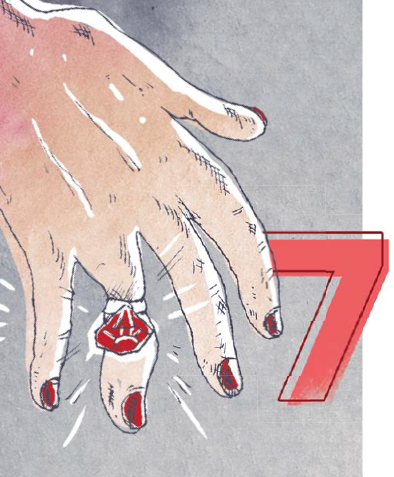
➤
What’s the policy for most jewelers
when it comes to resizing a
ring bought at their store?
Based on our surveys, between 85 and 90 percent of independent
jewelers offer free resizing on the purchase of
a ring. A further three in five of those jewelers make it a
one-time offer. Then come the conditions: Not for rings
under $100; not for work beyond the shank; offer valid
only for 30 days, six months, or up to one year to “allow for
seasonal changes”; not more than two sizes up (but possibly
free for any size down); up to a size 8 for a woman, 12
for a man; yes for gold, no for sterling … and so on. Understandably,
most jewelers feel the need to cover themselves
against escalating costs and the changing shape of their
customers. “I can’t be responsible for a customer doing
a full-gainer into a box of Twinkies,” says Chuck Kuba,
owner of Iowa Diamond in Des Moines, IA. “That’s a lot
of gold going from a 7 to a 10,” notes Cathy Grad, of Caffray
Jewelers in Hinsdale, IL. At the boldest end of the
spectrum are stores like Daniel R. Spirer Jewelers in Cambridge,
MA, which offers lifetime free sizings, repairs and
stone-loss guarantees on everything made at the store.
“Doesn’t matter if the ring was purchased a week ago, a
month ago or 20 years ago,” says owner Daniel Spirer.
There is a clever catch though: The customer must come
in every six months for a cleaning/check. The secret to
offering free resizings is to build the cost in, and to keep in
mind the marketing benefit. After all, people aren’t going
to see your handiwork, if your customer doesn’t wear it.
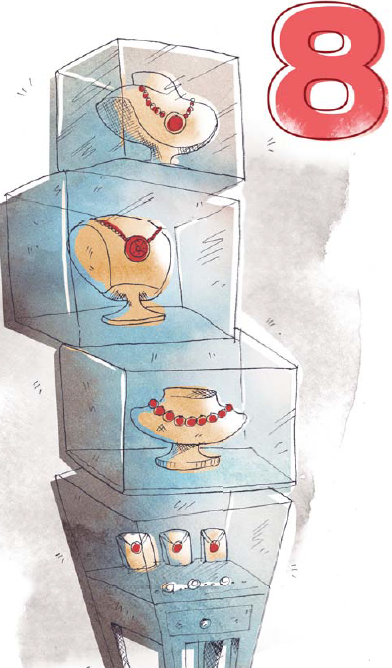
➤
I’ve probably got about 70 items
or so sitting atop about 110 feet
of cases. Is that too many?
We handed this question to our old friend and display
expert Larry Johnson: “You are right. It’s way overboard.
Clutter costs you sales,” he says, explaining that customers
don’t know where to focus. It’s also possible to overwhelm
the first time visitor with an overly wide range of merchandise.
Johnson recommends you keep only a few necessary
items that really help you sell, like a diamond pyramid or
a counter pad, on top of the case. Anything on top of the
counter will distract customers from looking inside the
case where the good stuff you want to sell lives. Furthermore,
items on the top of counters cast shadows on anything
below them, taking away from their attractiveness.
“It always surprises me that some retailers put top-ofcounter
displays full of less expensive goods, that often are
slow movers, over a case full of better goods, essentially
turning the real estate into a dead zone,” Johnson says.
Instead, imagine the showcase as a workbench for a
salesperson. “Would you stack 70 items on your shop
bench (or desk) and then try to get your work done there?
“Try this, take everything off the counter for a week
and see which items of the clutter you miss.”

➤
How can I add some
corporate accounts
to my customer base?
Like so much in business, it comes
down to getting your name out there,
joining business groups like the local
chamber of commerce and leveraging
existing relationships. “You
must meet the ‘right’ people so your
message can be delivered properly,”
noted John Zeke, owner of Zeke’s
Jewellers in Brandon, Manitoba,
Canada, echoing the sentiment of
many in our Brain Squad survey
group who have found success in this
market. It’s worth keeping in mind
that this segment can be a tough one,
with slim margins and whimsical
ordering policies that are dictated
by the head office. Still, it can also be
a nice source of additional revenue,
especially if you offer engraving or
3-D printing services. (See Do You/
Don’t You on page 129 for more ideas.
And don’t miss Gift Guide on page 62
for product ideas.)

➤
I get a lot of requests for
multi-photo lockets and am
not feeding the need. Any
ideas on what are selling at
the lower price point range?
We surveyed our readers and the
most common response we received
was … “you don’t seem to have looked
very hard.” But that’s OK, our readers
are a forgiving and helpful bunch The most frequently recommended
manufacturer was Marathon (3000
series) out of Attleboro, MA, followed
by Quality Gold, Rembrandt,
Rio Grande, Artistry Ltd., Carla
and Stuller. At the higher end are
designers such as Azur, Victor Meyer,
Marakraft, Monica Rich Kosann,
Jost Brothers, Bijoux Graphique
and Roberto Coin. If none of those
can supply what you’re looking for, a
Brain Squad member recommended
searching Etsy for the term “folding
lockets.” And if you still have no luck,
it could be time to venture into 3-D
printing, suggested another member.

➤
What makes
a good car wrap?
An undeniable focus on the brand, says Dan Antonelli, president of
Graphic D Signs and author of Logo
Design For Small Business. He notes
that few other advertising forms give
the viewer such a short time to see
the message. “If you can’t take everything
away from the wrap going 40
mph it’s useless.” Antonelli says there
are only three or four things a good
wrap needs: strong brand implementation,
(sometimes) tagline messaging,
a Web address and (maybe) a
phone number. “For small businesses
trying to make an impact in their
community, the message is always
about the brand,” he says. “Bullet
lists, which look more like shopping
lists, have no place on a vehicle. This
isn’t the yellow pages.” For a similar
reason, Antonelli discourages the use
of photos and making any additional
modifications to the vehicle. “When
we see something with impact —
something that we can actually read
and remember — it can’t help but
stand out among the visual clutter.”
Anything else is a distraction.

➤
Should I use vendor
displays or my own
to sell diamond jewelry?
There are times, says display expert
Larry Johnson, when it makes sense
to use vendor-provided collateral,
such as when customers ask for
the line by name (“Can I see your
Tacori rings?”), or when the display
has some feature or information
you can’t re-create in your own case
setup. But more often than not you
won’t get the seamless fit and respect
for display rules that top-notch
visual merchandising demands, says
Johnson, listing mismatching colors,
overbearing logos and “displays that
are too big for the amount of business
you expect them to generate”
as some of the problems he’s seen in
such situations. Good display is all
about balance, focus and restraint,
and an ad hoc approach will rarely
work. “Sometimes free can end up
being very costly,” Johnson says.

➤
When choosing a tax
return preparer, should
I opt for someone who
claims they can get a larger
refund or a percentage
of the amount of the refund?
Neither, say the IRS’s own guidelines.
Your name is at the bottom of the
return and you’re on the hook if they
get too aggressive in claiming deductions.


➤
How can
I better cater
to my elderly
customers?
Your appreciation of this demographic
is a good start. America is aging
at an alarming speed — people 65
or older are expected to account for
almost a quarter of the population
by 2040, up from 15 percent now.
And according to a survey by consultants
A.T. Kearney, many of those
older shoppers do not think they
are adequately served by retailers.
They say they have difficulty locating
or reading prices, and complain
that many employees are ill-trained
when it comes to handling seniors.
They want and expect a sympathetic
understanding of the realities of
age while not being treated as old
or elderly. Address these areas and
you’ll be a step ahead of competitors.
Here are a few other things:
- Add more seating: As retail expert
Paco Underhill, notes: “A chair says:
we care.” Sit-down retailing has a
long tradition in Europe and the
addition of club seating or small
sofas with coffee tables is a way to
sell jewelry in a more personal way,
while elevating your store beyond
the usual mass-merchandising retail
environment. (And don’t forget seating
for the shopper’s companion.)
- Offer pickup and delivery service
for repairs. Phil Pancer, owner
of Ring Leader Fine Jewellers in
Ontario says it was one of the most
ridiculed ideas he’s had as an owner,
but that it’s worked really well “for
my very good, elderly customers who
need repairs and who like to spend
money!”
- Investigate estate services. Larry
Minden, whose store Summerlin
Jewelers is next to a Sun City retirement
community near Las Vegas, has
been able to grow a large estate jewelry
department. Minden says buying
and selling estate jewelry gives the
business a nice point of differentiation
in its market.
- Holding an event? Aim for a coffee
morning: Older people enjoy shopping
and prefer to visit on weekdays,
and relatively early in the mornings,
when the stores are less busy.
- Hit the heart. Advertising themes
that work include those tapping into
nostalgia and references to films and
TV shows of the past; showing grandparents
with their grandchildren;
and depicting older people in situations
where they are humorous, wise
and important to the family.


➤
How can I work out
roughly how many appetizers
we will need for an evening
event at the store?
Celebrity chef Giada De Laurentiis
shares her rule of thumb at the Food
Network Blog: Plan on making or
buying about four pieces per person
(and have a few extra snacks on hand
like chips or dips for people who
show up with a genuine hunger).

➤
Is it true that SBA loans
take longer than regular
bank loans to be approved?
I’d expect as much from
a government agency.
Actually, the Small Business Administration
doesn’t extend loans, it
just guarantees them as a way to
encourage banks and other non-bank
lenders to feel more confident about
issuing loans to the little guys of the
business world. As for a protracted
approval process, that’s another
widely held misconception about
the SBA, says Kate Lister, author of Finding Money-The Small Business
Guide to Financing. “The information
an SBA lender requires, save
for a few extra details, is the same as
for regular loans,” she says. Keep in
mind that if one SBA lender is not
interested in doing business with
you, that shouldn’t preclude you
from visiting others. “Each lender
has their own approval criteria and
some prefer certain types of deals to
others,” Lister says. “Just be sure to
tell your lender if you’ve already been
declined. They will find out anyway,
and it will look bad for you if you
didn’t tell them. To find an authorized
lender, visit sba.gov or visit
your local SBA office.

➤
I have a terrific jeweler
I would like to tie down for
the long term. I have thought
of offering him stock in the
business but am wary about
the ownership and tax
implications down the line.
What else can I do?
One option is “phantom stock”. —
which pays bonuses based on the
growing value of the company but
is not an actual ownership stake. Be
sure to explore other options though,
and get well-considered feedback
from the jeweler. Perhaps he doesn’t
see value in such stock and would
prefer cash bonuses or a more flexible
work schedule. For a lot of workers
being valued and having control
over what they do counts for a huge
amount.

➤
Our store
has never really
bounced back
from the recession
and to keep going,
I feel we need to
downsize. How
can I go about it
without destroying
morale in the
store?
Layoffs are tough. You can’t have
high productivity without good
morale, and you can’t have good
morale unless people have confidence
that the company has a
future and that the store is going to
treat them fairly if things get worse.
Employees need to know that you
respect and value their contributions
and don’t just view them as
a resource that can be used and
dumped.
Sometimes, however, you have no
choice but to order layoffs. In that
case, remember three rules:
- Rule No. 1: Do them all at once.
Dragging it out will destroy morale
and make a bad situation worse.
- Rule No. 2: It’s better to cut too
much than to cut too little and be
forced to repeat the process.
- Rule No. 3: Make sure all remaining
employees understand that what
you’re doing is saving their jobs. Be
very clear that it’s a one-time emergency
measure and that their positions
are secure.
Suzanne Devries, president of
Diamond Staffing Solutions, says
that legally you’re required to give
only the vacation, sick and personal
days they have accrued, although she recommends that you base your
decision on how valuable an asset
this person has been to your organization,
and how long they have been
with you. “If it’s a long time and they
have been loyal, you should definitely
consider a certain amount of days
per year. Finally, make sure you have
documentation that states why you
are having layoffs.” She also advises
you do an exit interview and have the
person sign a document stating that
he understands why he is “part of a
force reduction.” An important thing
to keep in mind is how other staff
will view this. They will want to know
that they will be treated fairly even
when times are tough.

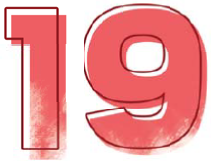
➤
I’m thinking of opening an
eBay shop as a side project
to move merchandise. What
kind of return can I expect?
Probably not much. From the jewelers
we’ve spoken too, the time and
effort that go into photographing,
posting and detailing items on eBay
will usually offset any margin you
make. But if you can quickly get back
money on dated inventory to invest
in new goods, then it may well be
worth doing. An outlet that allows
you to dispose of goods withoutalerting customers to the fact that
you are lowering your prices on
merchandise is another plus. From
our Big Surveys, we estimate one in
10 jewelers use eBay this way. That
relatively low figure underscores
that it isn’t all that lucrative, but it
does help with clearance. Gail Brett
Levine, the publisher of jewelry auction
guide Auction Market Resource,
offers a couple of suggestions for
trading on the online site:
- Consider jewelry items at the
$500 and under price point, as
opposed to loose diamonds and gemstones,
due to the traditionally low
price points realized on eBay.
- Be prepared to spend time fielding
email questions from potential
bidders. You can reduce some of
the work involved by having wellthought-
out descriptions, with some
gemological data (millimeters, carat
weight, etc.). A sharp picture showing
details is critical.
- Avoid frenzied descriptions, false
statements, full caps, exclamation
marks and puffery —it will do more
harm in the long run when your
name is accessed in the “Seller’s
Feedback Profile.”


➤
Is lighting
in the 6,000 Kelvin
range too high
for diamonds?
In most cases yes, but it partly
depends on the store environment
and décor, says Howard Gurock of
Eco-Lite Products, a maker of LED
lighting for jewelry stores. Gurock
says that about 10 percent of his
customers do opt for lighting in that
high 6,000 Kelvin range because they
think it looks like a purer white but
he cautions that while this might
work in a super modern showroom
with lots of metal and black, he
doesn’t recommend it for a more
typical environment, especially with
antique wooden cases. The danger
is that a too powerful light “will
blast your diamonds and wash the
color out of them and out of colored
stones,” he says. “You want your
lighting to attract attention to the
brilliance of the diamonds, not wash
it out.” The other danger is that a customer
who tries on a ring in such a
bright light will often be taken aback
by the ghostly, bloodless look of her
hand. That usually ends with her
declining to try on any other rings. Of
course, go too low, to around 4,000
Kelvin, and your diamonds may start
to give off a less attractive yellow
glow. “It comes down to individual
store owner’s choice, some want a
warmer color,” Gurock says. “It’s
knowing your customer. There has to
be a happy balance.”
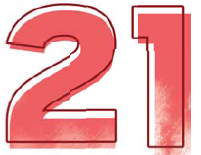
➤
If I upload something
to YouTube, do I lose
ownership of that video?
No, it remains all yours. Unlike most
of its technology peers’ byzantine
legal riders, Google’s terms of service
— for YouTube at least — are surprisingly
brief (at just 5,500 words),
friendly and best of all, comprehensible.
The pertinent part reads:
Some of our services allow you to
upload, submit, store, send or receive
content. You retain ownership of any
intellectual property rights that you
hold in that content. In short, what
belongs to you stays yours.

➤
Is the customer
always right?
From a business viewpoint, we think
it’s a good idea to take the view that
every customer service problem
starts with you (“take extreme ownership”
as former Navy SEAL trainer
and business book author Jocko
Willink puts it). But in reality, “the
customer is always right” adage is
poppycock. A more helpful saying is
that the market is always right. When
it decides you must change your pricing
or business model or whatever,
then obey. Or perish.


➤
How should I deal
with a customer
who wants to return
an engagement
ring
following a failed
proposal?
We think generous return policies
are an excellent marketing tool, and
younger customers, brought up on
LL Bean lifetime exchange policies,
are increasingly expecting such liberal
approaches to returns. If that
doesn’t work for you, offer to make
a diamond pendant for his mother
at a special price. At least she won’t
say no.

➤
Is there ever a time
when it’s OK to assume?
Short answer: No.
Long answer: Sometimes. We doubt
there is an honest jeweler out there
who can say he or she has never been
guilty of prejudging a customer only
to find out the person was a wealthy
oilfield worker, tech whiz, pro athlete
or farmer. Usually, it ends well with
the person in question pulling a wad
of cash out of his dirty overalls. And
sometimes it ends badly such as the
case with the Milwaukee Bucks’ John
Henson when he was locked out of
a jewelry store last year. At the same
time, experience as a jeweler, as in
any field — art dealer, teacher, cop,
parent — gives you a certain expertise
that allows you to take short cuts
that make you more efficient (read
Malcolm Gladwell’s Blink for more
on this). The secret is to keep top
of mind that you’re never really in
as much mental control as you may
think. We humans have a biological
weakness for being influenced by
biases, habits and just lazy thinking.
Merchant beware!
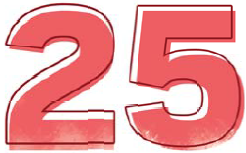
➤
I’m thinking about doing
a pop-up at a big regional
mall 20 miles away. I figure
we’ll meet new customers,
raise brand awareness
and make some money.
Am I being too optimistic?
Perhaps only about the work involved.
Pop-ups seem like an almost spur-ofthe-
moment thing — throw a tent up
and have some fun under the sun —
but they involve serious work, both
in the preparation and the manning.
And with jewelry there are additional
security and insurance issues with
anything above a fashion price point.
Randy Martin, of Martin’s Jewelry
in Ada, OK, says he felt good about a
pop-up he did “until you realize the
advertising costs, giveaway costs,
employee costs and ‘behind costs’
(wear and tear of the behind). When
it’s all factored in, it was a bust.”
Another factor to consider — you
probably won’t be welcomed with
open arms by local jewelers. “I think
the landlords that allow pop-up
stores should be tarred and feathered,”
says Lisa McConnell, owner
of Lisa McConnell Design Studio in
Fort Worth, TX, noting that it’s the
permanent tenants who get stuck
with “paying deposits, taxes, CAM
and HVAC maintenance.”
Still, at INSTORE we never like to
be too negative when you try to get
out of your comfort zone. So, if you
can avoid a tar and feathering, you do
your marketing correctly and you get
the product and the demographics
right, pop-ups can reap rewards.
“Very successful,” was how Brian
McCall, owner of Midwest Jewelers
& Estate Buyers in Zionsville, IN,
described his experience. “We did
a pop-up at a local horse show with
horse-themed jewelry and gifts we
got from Quality and Stuller. We had
to re-order twice during the show.”